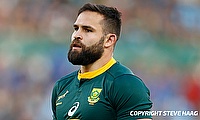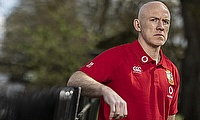Things we learnt about Wales
After an entirely disheartening opening day loss to England, Wales bounced back admirably in this year’s Six Nations, winning their four remaining games and securing a respectable third-placed finish.
As with our previous look at France’s campaign, we have come up with eight things Wales and Warren Gatland have learnt as they head towards the Rugby World Cup later this year.
1. Baldwin is the first-choice hooker
The Welsh lineout has struggled for consistency over the last 18 months, but the introduction of Scott Baldwin as starting hooker has helped turn it from a weakness to a strength. The Osprey was accurate at the set-piece and though not quite offering the dynamism of Richard Hibbard with ball in hand, he proved himself to be very effective and industrious in defence.
Hibbard’s role on the bench puts Wales into a similar situation to the ones England and Ireland currently have, whereby their replacement hookers offer game-changing ability in the loose, particularly against tired defences, but do have to weigh that up against definite drops in set-piece accuracy.
2. Just call Adam already
With Samson Lee facing a race against time to be fit for the RWC and Gethin Jenkins showing signs of age, Wales’ front row is in precarious shape. If Lee fails to recover in time, Wales face a choice between Rhodri Jones, Aaron Jarvis, Tomas Francis and Scott Andrews at tighthead, whilst Adam Jones cools his heels with the Cardiff Blues. Jones may not be the player he once was, but given alternatives, it seems as if Gatland is cutting off his nose to spite his face.
The loosehead situation is a little more favourable, with the up and coming duo of Rob Evans and Nicky Smith offering enticing potential, whilst the veteran Paul James offers another alternative to Jenkins. Deciding between the merits of in-form but inexperienced props and experienced players lacking in consistency, could be defining for Gatland and Wales going forward.
3. Full steam ahead in the engine room
Wales have a nice bevy of options available to them in the second row, with a number of players impressing recently in a bid to partner Alun Wyn Jones at the RWC. Luke Charteris is the current incumbent, finishing the Six Nations in sparkling form and playing a pivotal role in Wales’ invaluable victory against Ireland in Cardiff.
Charteris’ biggest challenges come from Jake Ball and Bradley Davies, both of whom have been in good club and/or international form over the last two months and they give Gatland the welcome kind of selection dilemma. They are also different types of locks to Charteris, offering Wales plenty of versatility in a challenging RWC pool.
4. Warburton cemented as best in the northern hemisphere
A talismanic captain and efficient openside, Sam Warburton was pivotal in leading Wales back from a poor start to the 2015 campaign. He continued to show that not only is he amongst the best in the world at his position, but that he also complements Dan Lydiate and Taulupe Faletau perfectly.
The once-loud clamours for Justin Tipuric to start in his stead have all but died away and if there were any doubts as to whether or not Warburton should be leading Wales to the RWC, his performances against both Ireland and France should have been enough to erase them. Tipuric remains an intriguing option from the bench, capable of changing games, and rounds off a back row unit that is in very good shape.
5. Fly-half waters murky for Wales behind Biggar
Dan Biggar was the picture of health and consistency during this year’s tournament, cementing his place as Wales’ starting fly-half with accomplished performances in his final four games. There’s plenty of talent behind Biggar in the pecking order, but they all suffer from either a lack of international experience or an underwhelming test résumé.
Should Biggar be injured, the safe money would be on Rhys Priestland stepping up, who has done the job before, albeit for little acclaim from the Welsh public. Gareth Anscombe was brought in to both the squad and the country to provide competition at the position, but he has yet to pull on the red of Wales. After his controversial selection, it seemed as if Anscombe was bound for at least an appearance from the bench during the tournament, but the form and fitness of Biggar prevented that from happening.
6. Roberts and Davies see off competition – just
The Scarlets’ Scott Williams continues to press hard for playing time with Wales, but impressive campaigns from both Jamie Roberts and Jonathan Davies should, for now, keep him in check. The two incumbents of the Welsh midfield combined in attack well throughout the tournament, as well as proving a difficult obstacle to breach in defence.
As pleasing to Gatland as seeing his preferred combination perform well would have been, the impetuous that Williams provided off the bench would also have been a welcome sight, and as mentioned in regards to Hibbard, he offers game-changing ability from the bench.
7. There’s a new Williams in the Welsh back three
The introduction of Liam Williams into the Welsh back three, at the expense of Alex Cuthbert, helped bring about a more clinical and dangerous Welsh back line as the tournament progressed. Williams took to playing on the wing in his stride, looking every inch an international winger rather than a converted full-back.
Some will still call for Williams to be moved to full-back, and whilst his counter-attacking ability certainly means it’s worthy of consideration, he doesn’t offer the defensive awareness or tactical kicking game that Leigh Halfpenny does. The current back three of George North, Halfpenny and Williams works well and that is an enviable position to be in during a RWC year.
8. Has Gatland developed a plan B?
The Welsh turned in a far more expansive performance against Italy, that actively sought to involve both wingers as something more than battering rams, but it was a performance born of desperation, against a team which would have struggled taking on the better Aviva Premiership or Top 14 sides. Can (or would) Wales replicate that kind of ambition against England, Australia or even Fiji at the RWC?
The bench options of Tipuric and S Williams proved conducive to a more expansive style, as did L Williams in the starting XV, which suggests the potential is there to open games up should Gatland wish to go down that route. Reserve fly-half Anscombe also projects as a player that would thrive on looser play at international level, especially if you look at his time with the Blues and Chiefs in Super Rugby.

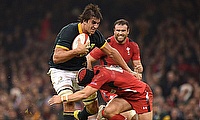
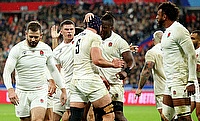

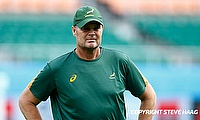
.jpg)
